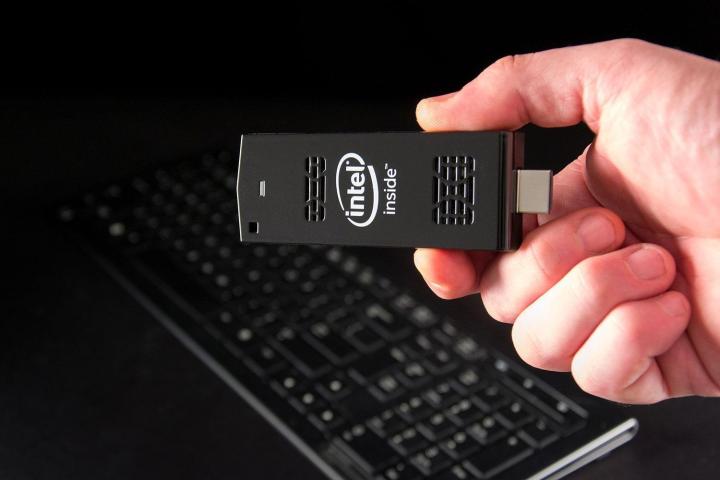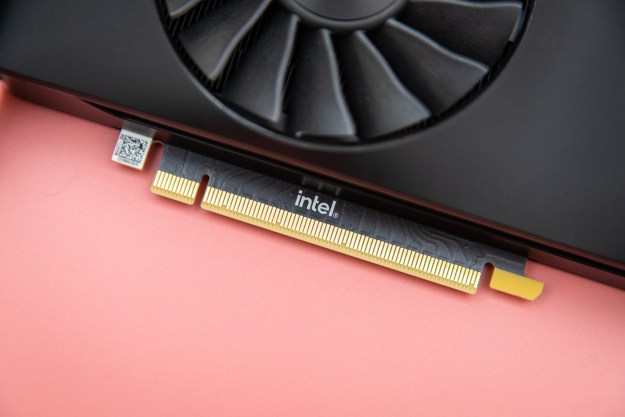
The Intel Compute Stick, released back in May, is a tiny PC you can plug directly into a TV or monitor. Until now it came with Windows 8.1 installed – meaning users wanting Windows 10 needed to upgrade it themselves. Not anymore: Liliputing.com is reporting that Intel is now selling the device with Windows 10 installed for between $140 and $150.
The Windows 10 versions of Intel Compute Stick are identical in terms of hardware – the upgraded operating system is the only difference. Of course, Windows 8 users can upgrade to Windows 10, free of charge — but not everyone wants to go install a new operating system on a device they just bought.
Reviewers weren’t sure what to make of the Compute Stick, which like the Chromecast or the Amazon Fire TV resembles an oversized USB key. Intel’s offering, however, is more expensive than those dedicated streaming devices, because it’s a full-fledged PC — albeit an underpowered one. With a quad core Intel Atom processor, 32 GB of storage, and only 2 GB of memory, it’s not exactly ideal for gaming but it is more than capable of HD video playback.
In terms of media, the most compelling reason for such a device is compatibility. Amazon Prime Video, for example, doesn’t work well with Chromecast because of a feud between Google and Amazon. But every site works on a regular web browser, and by being a PC that is exactly what the Compute Stick offers. At the same time, a PC interface isn’t really optimized for use with a TV sitting across the room, and dedicated options are cheaper.
Intel, for their part, markets the device as ideal for turning a TV into a family computer at home; for businesses, they claim it could be a thin client or digital signage.
Of course, if you’ve waited this long for Windows 10 on a Computer Stick, you might as well wait a little longer: Intel is expected to release new versions of the computer stick later this year, with a more powerful processor. Or, if you’re more of a Linux person anyway, you could just buy the cheaper Linux version of the Compute Stick instead: its less powerful, but also significantly cheaper at $90.
Editors' Recommendations
- Intel is oddly enthusiastic about AI replacing everyone’s jobs
- Intel’s new CPU feature boosted my performance by 26% — but it still needs work
- Windows 11 24H2 or Windows 12? Here’s what’s coming soon
- A major era in Intel chip technology may be coming to an end
- NPUs are officially useless — for now


